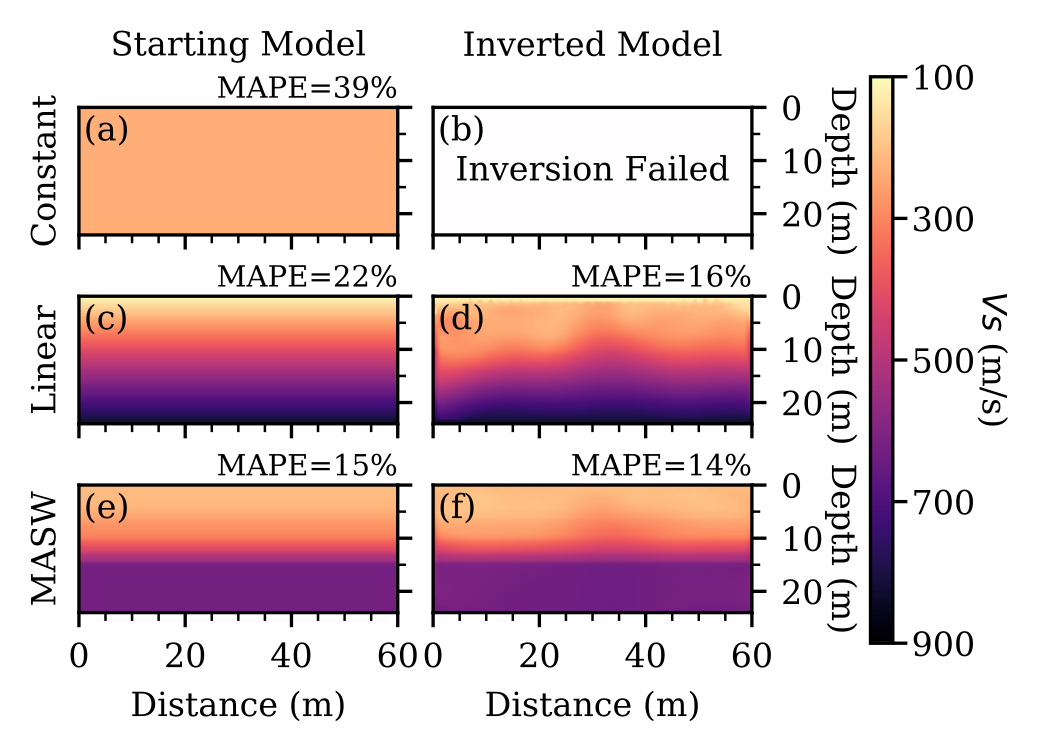
Influence of different starting models on near-surface two-dimensional full waveform inversion
All aspects of geotechnical engineering require an understanding of the composition and distribution of subsurface properties. Yet, as a field of study, geotechnical engineering lags behind other disciplines with similar imaging needs. This lag is due in part to the challenging nature of 2D/3D subsurface imaging, as well as a historical over-reliance on 1D subsurface approximations. Recently, however, several stress-wave methods have achieved increased use for 2D/3D near-surface characterization, one of the most promising of which is full waveform inversion (FWI). However, FWI, as with all inverse problems, suffers from non-uniqueness, which results in multiple solutions that may appear quite different to rank as equivalent in terms of the inverse problem's objective function. Or in other words, multiple different potential solutions often fit the experimental data equally well, resulting in uncertainty as to which is most representative of the subsurface. This paper examines uncertainty in the 2D FWI inverse problem by considering how different starting models affect the accuracy of the solution. In particular, this paper considers the effect of different inversion starting models on the solution of a classic geotechnical problem; characterization of a site composed of soil over undulating bedrock. Three different categories of starting model are considered: those with constant stiffness, those with linearly increasing stiffness with depth, and those derived from other 1D/2D seismic methods (i.e., surface-wave analysis).
